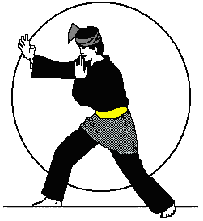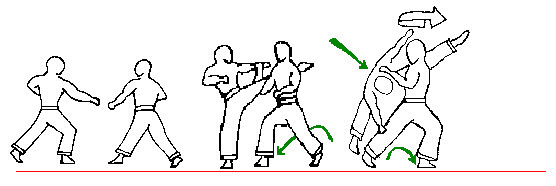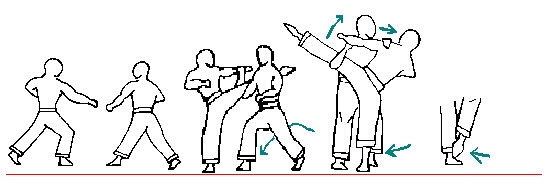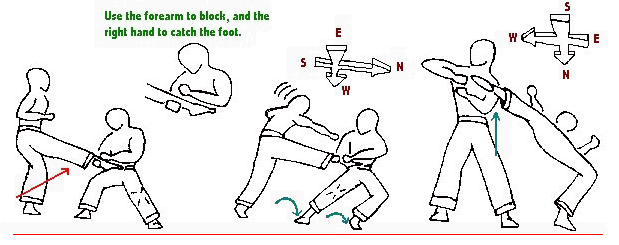

Below are some of the takedown techniques employed by silat fighters in competition. Do understand that the techniques featured here are those that have actually been used successfully. As with all forms of exercises, one must check with a physician before attempting any of the techniques above.
The techniques are shown in a series of steps to show how it is actually done. But in practice the movements are performed simultaneously as one movement. In fact, this should be the norm with all techniques in martial arts. In a competition or a fight, the fastest is usually the winner. The techniques, therefore, needs to be combined with speed to make it successful.
Dated: April 1998.








|
If one looks closely, one notices that the exponent will most of the time grab the kicking leg on the area around the knee. To reach the knee he must take a step forward. There is a reason for this; Firstly, if the opponent tries to grab the shin area with his forearm, he will feel the full impact of the kick. But if he grabs the area around the knee, the impact will be less.
Secondly, if he grabs the shin area, he will find it hard to sweep or trip the opponent's supporting leg, since it is too far away. There are techniques featured here where the exponent grabs other than the knee area (for this the exponent does not take a step forward), but with that the exponent has to pull his adversary towards him , making him off-balance, and then trips him down. Another thing to remember when practicing these techniques is that one must always seek to unbalance his opponent. An opponent that is not off-balance will not be dropped down unless with pure brute strength. If after grabing the kicking leg one is not able to drop his opponent after 3 seconds (due to faulty techniques or the opponent clinching on him), the wasit will stop the fight and bring the fighters to the centre of the ring to resume fighting. So, again speed is important. |
